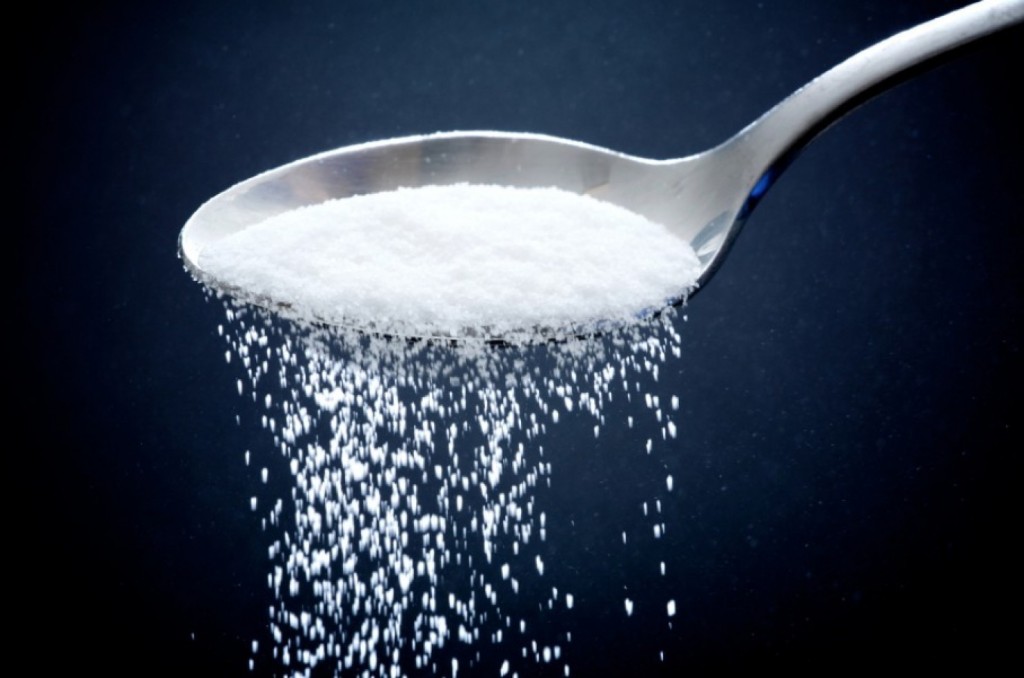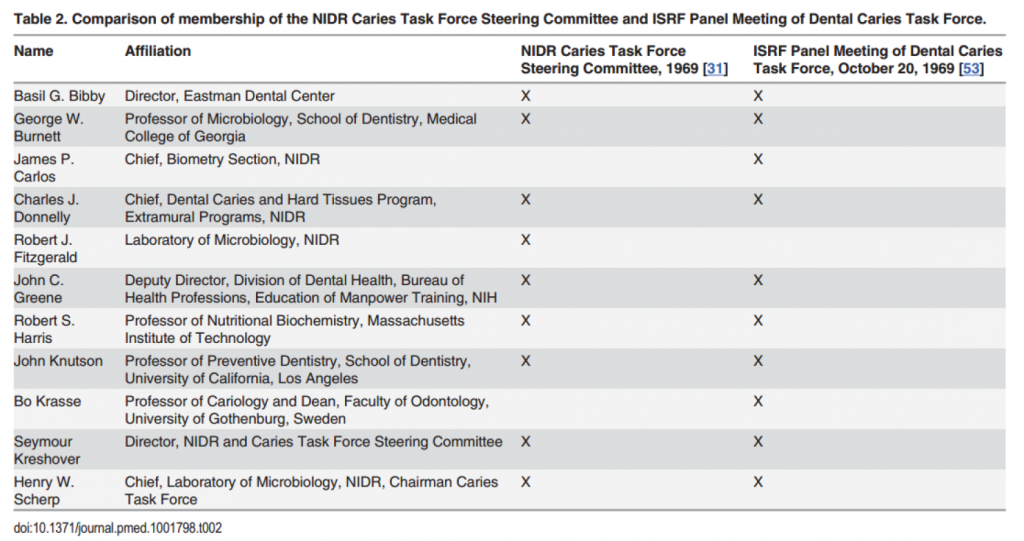The Untold Story of How the Sugar Industry Shaped Key Government Research about Your Teeth
HEALTH, 16 Mar 2015
Roberto A. Ferdman – The Washington Post
11 Mar 2015 – Decades-old documents have surfaced showing that the powerful U.S. sugar industry skewed the government’s medical research on dental care—and ultimately what officials recommended for American diets.
Despite a widespread understanding that sugar played a key role in tooth decay, sugar industry leaders advocated for policies that did not recommend people eat less sugar, according to an archive of industry letters dating back to the 1950s preserved by the University of Illinois and analyzed by a team of researchers at the University of California in San Francisco. And the government listened, according to a new report published in the journal PLOS Medicine.
In the 1960s, amid a national effort to boost cavity prevention, the U.S. government spearheaded a research program, known as the National Caries Program (NCP), which aimed to eradicate tooth decay by the end of the 1970s.
But instead of turning to an obvious solution—having people eat less sugar—the government was swayed by industry interests that pushed alternative methods, such as ways to break up dental plaque and vaccines for fighting tooth decay, according to more than 300 internal industry documents, including old letters and meeting minutes.
How did the industry wield so much power?
For one, the sugar industry had a strong presence in the subcommittee that developed the very research priorities that later guided dental care policies. A task force committee that was set up by the government to set research priorities for the NCP included many doctors and scientists who were also working closely with the sugar industry. These committee members were also part of another group called the International Sugar Research Foundation, which was established by the sugar industry.
The overlap included all but three members, as shown by the table below.
It’s no surprise then that the research plan laid out by the government ended up looking eerily similar to what the sugar industry had proposed. Some 80 percent of the industry’s recommendations were adopted, and research that was seen as being potentially harmful to the industry was noticeably absent from the proposal, according to the report. And, what’s more, as much as 40 percent of the recommendations included in a report written by the sugar industry’s research group, ISRF, ended up being used—almost verbatim.
Rather than recommending that people reduce sugar intake, government-funded research focused on interventions that wouldn’t advise Americans to lower their sweets consumption. For instance, the research encouraged the wider use of fluoride and sealants in dental hygiene. The approach essentially conceded that imploring people to reduce sugar intake was impractical, even if it would help prevent tooth decay.
The problem with the industry’s influence on cavity research, aside from the obvious conflicts of interest, is that it led to a series of recommendations that never proved effective. For instance, the government also proposed using a mixture of fructose and glucose to substitute sugar, but scientists figured out that was ineffective a decade later. There were also efforts to create an additive that nullified the effects of sugar on tooth decay. That research was soon abandoned.
These days, the sugar industry might not wield the same level of power it did when these documents were written, but it still spends a lot of money to get its way.
In 2009, for instance, ahead of a possible federal excise tax on sugary drinks, the American Beverage Association, Coca-Cola Company, and PepsiCo spent nearly $40 million to prevent the policy proposal from passing into law. The effort was unsuccessful.
More recently, the industry attempted to influence the ongoing debate about changes to the Food and Drug Administration’s nutrition facts label. One of the key changes currently being mulled is the inclusion of an “added sugar” label, which is meant to communicate how much of any given food’s sugar content was added during processing. The industry is vehemently opposed. The American Bakers Association, American Beverage Association, American Frozen Food Institute, Corn Refiners Association, International Dairy Foods Association and National Confectioners Association wrote a letter this past fall imploring the FDA to reconsider the proposed change.
“When you take on Big Sugar, you take on a huge political money operation,” Rep. Mark Steven Kirk from Illinois said back in 2007.
The industry, for its part, is critical of the new report. “It is challenging for the current Sugar Association staff to comment directly on documents and events that allegedly occurred before and during Richard Nixon’s presidency, given the staff has changed entirely since the 1970s,” said Tonya Allen, a spokesperson for the Sugar Association. “Sugar has been safely used by our mothers and grandmothers for hundreds of years.”
Tooth decay, though preventable, is still widely prevalent in the United States. It’s the most common chronic disease among children and adolescents, according to the Centers for Disease Control and Prevention. And it affects adults, too—as much as 90 percent of them in some way or other, per the CDC. Eradicating it, as we aspired to in the 1960s, might be a bit far-fetched. But it’s easy to imagine there could have been more progress made if the government had not been influenced so much by the industry.
___________________________
Roberto A. Ferdman is a reporter for Wonkblog covering food, economics, immigration and other things. He was previously a staff writer at Quartz.
Go to Original – washingtonpost.com
DISCLAIMER: The statements, views and opinions expressed in pieces republished here are solely those of the authors and do not necessarily represent those of TMS. In accordance with title 17 U.S.C. section 107, this material is distributed without profit to those who have expressed a prior interest in receiving the included information for research and educational purposes. TMS has no affiliation whatsoever with the originator of this article nor is TMS endorsed or sponsored by the originator. “GO TO ORIGINAL” links are provided as a convenience to our readers and allow for verification of authenticity. However, as originating pages are often updated by their originating host sites, the versions posted may not match the versions our readers view when clicking the “GO TO ORIGINAL” links. This site contains copyrighted material the use of which has not always been specifically authorized by the copyright owner. We are making such material available in our efforts to advance understanding of environmental, political, human rights, economic, democracy, scientific, and social justice issues, etc. We believe this constitutes a ‘fair use’ of any such copyrighted material as provided for in section 107 of the US Copyright Law. In accordance with Title 17 U.S.C. Section 107, the material on this site is distributed without profit to those who have expressed a prior interest in receiving the included information for research and educational purposes. For more information go to: http://www.law.cornell.edu/uscode/17/107.shtml. If you wish to use copyrighted material from this site for purposes of your own that go beyond ‘fair use’, you must obtain permission from the copyright owner.
Read more
Click here to go to the current weekly digest or pick another article:
HEALTH:
- Dengue Fever Surges by 400% in Brazil after Bill Gates-Backed Gene-Edited Mosquitos Released
- Emerging Science: The True Precipitating Cause of Alzheimer’s May Be Much Simpler Than Previously Believed
- Got Titers? New Test Makes It Easy, Inexpensive to Find Out if You’re Immune to 11 Infectious Diseases

